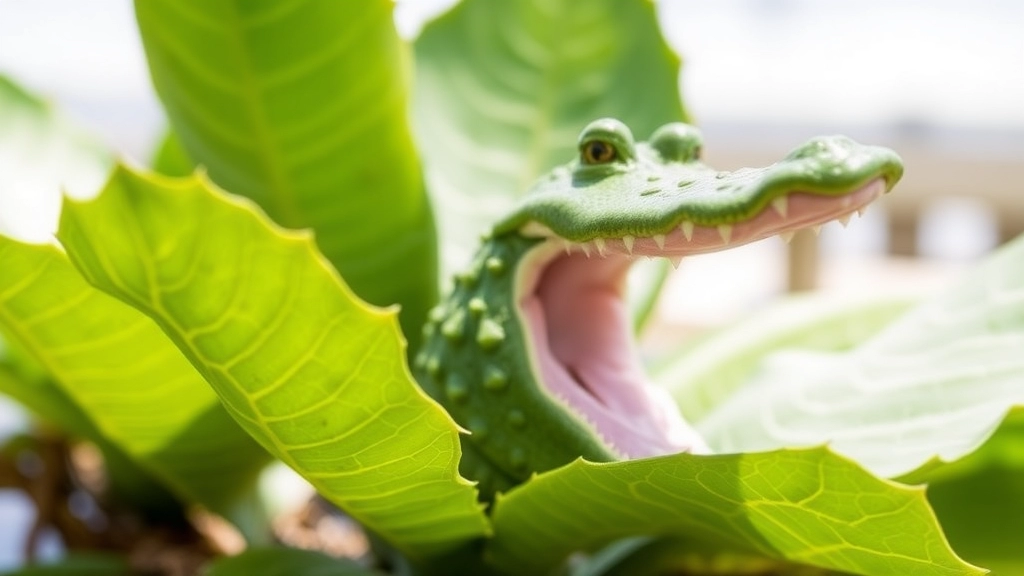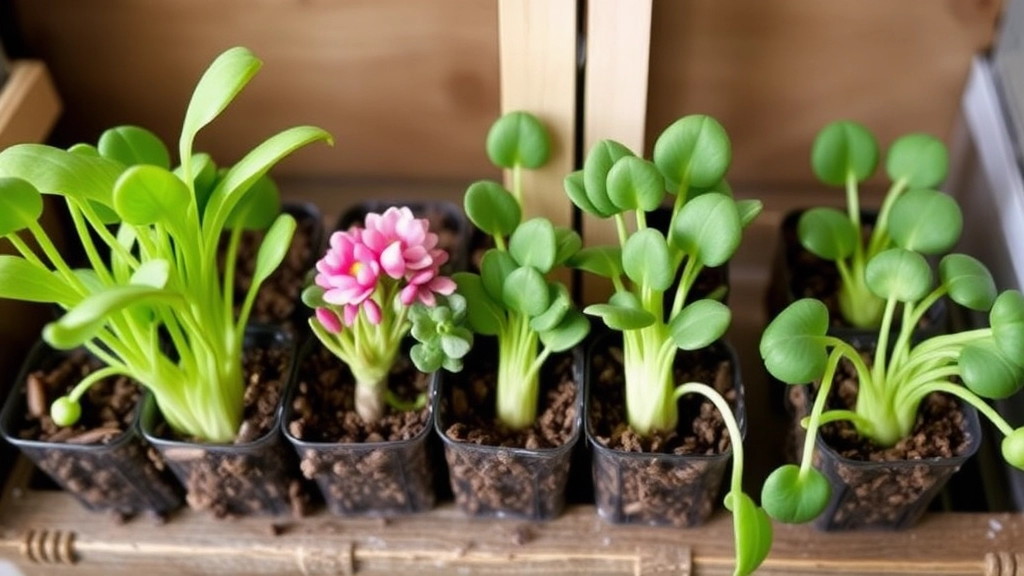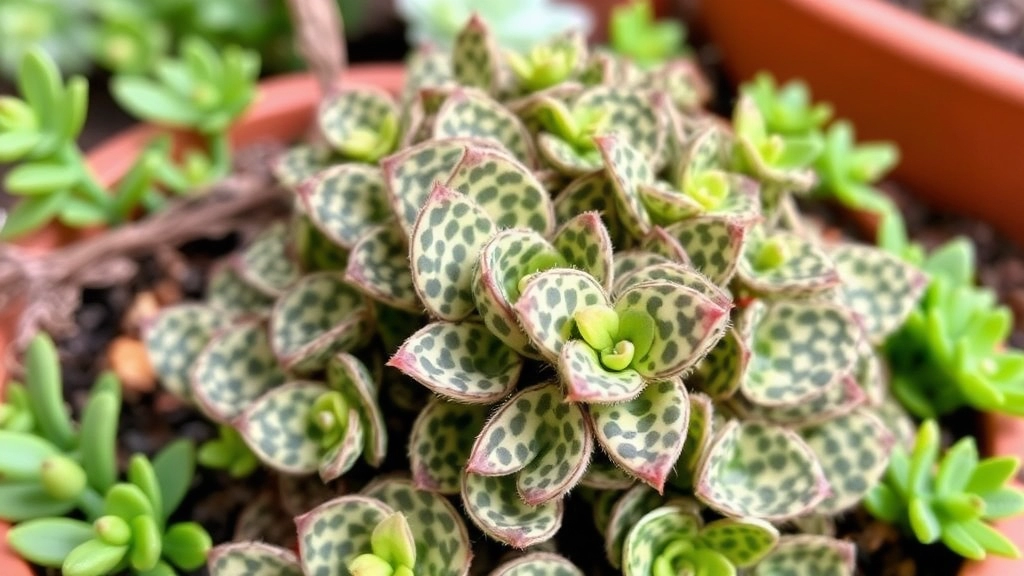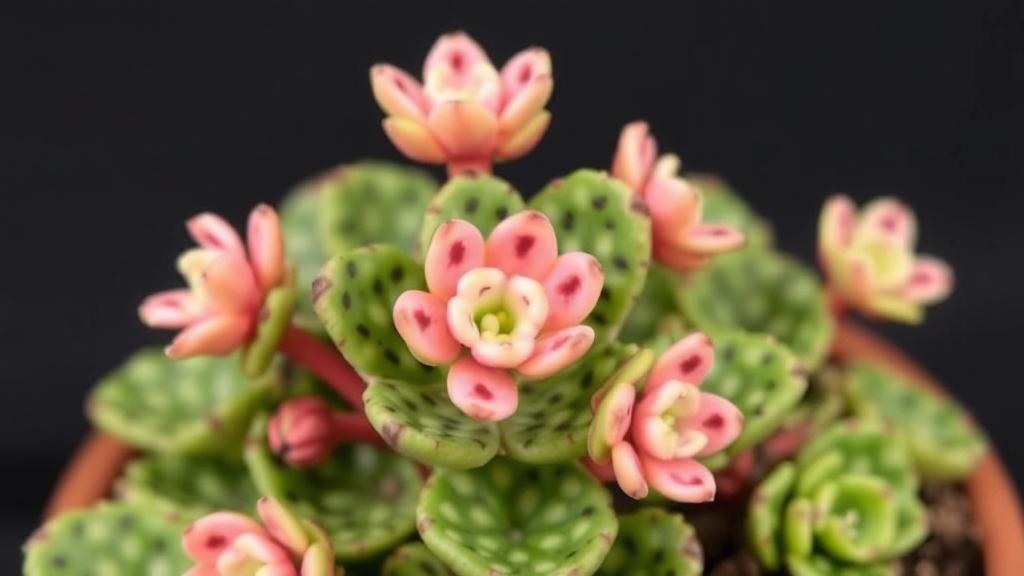Leopard Mother Of Thousands: A Guide to Cultivation
If you’ve ever come across the Leopard Mother Of Thousands, also known as Kalanchoe Daigremontiana or Alligator Plant, you know how captivating it can be. This unique plant is not just a visual treat but also an interesting subject for gardening enthusiasts. In this article, I’ll guide you through the essential steps to cultivate and care for your very own Leopard Mother Of Thousands.
Understanding the Needs of Kalanchoe Daigremontiana
Starting with the basics, it’s crucial to understand the specific needs of the Kalanchoe Daigremontiana. From soil requirements to watering schedules, I’ll cover everything you need to know to ensure your Alligator Plant thrives. So, let’s dive in and get those green thumbs working!
Are you considering adding a unique plant to your collection?
The Leopard Mother Of Thousands, scientifically known as Kalanchoe Daigremontiana, is a fascinating succulent that captures the attention of both novice and experienced gardeners alike.
This plant is renowned for its striking appearance and intriguing propagation method, making it a conversation starter in any setting.
Key Features of Kalanchoe Daigremontiana
* **Distinctive Leaves**: The leaves are large, fleshy, and often have a mottled appearance, resembling the skin of a leopard.
* **Offsets**: One of its most notable characteristics is its ability to produce small plantlets, or “offsets,” along the edges of its leaves.
* **Growth Habit**: This plant can grow tall, reaching up to 1 meter in height, making it a prominent feature in any garden or indoor space.
Kalanchoe Daigremontiana is not just visually appealing; it’s also relatively easy to care for, making it a great choice for those who may not have a green thumb. For more detailed care tips, you can refer to the [ultimate guide to growing Kalanchoe Pink Flowers](https://planthq.org/ultimate-guide-to-growing-kalanchoe-pink-flowers/). Additionally, if you’re interested in the medicinal properties of this plant, check out the [health benefits of Kalanchoe Pinnata](https://planthq.org/health-benefits-of-kalanchoe-pinnata-a-complete-guide/).
Unique Characteristics of the Alligator Plant

So, you’re curious about what makes the Alligator Plant, or Kalanchoe Daigremontiana, stand out?
This succulent is a real gem in the plant world, and it’s not just about its looks.
Distinctive Features
- Leaf Structure: The leaves are thick and fleshy, with a striking green colour. They often have a unique scalloped edge that resembles an alligator’s skin—hence the name!
- Offsets: One of the coolest things about this plant is how it propagates. Tiny plantlets grow along the edges of the leaves. These little babies drop off and take root wherever they land, creating a lovely cluster of plants.
- Height and Growth: Typically, the Alligator Plant can grow up to 1 meter tall, making it a striking addition to any indoor or outdoor space.
- Flowers: When it blooms, it produces beautiful clusters of small, tubular flowers that can be pink, red, or yellow. These add a pop of colour that can brighten up your space.
- Resilience: It’s tough as nails! This plant can survive in various conditions, making it perfect for both beginners and seasoned gardeners.
Fun Fact
Did you know that Kalanchoe Daigremontiana is often referred to as “Mother of Thousands”? This name comes from its ability to produce numerous offspring, making it a prolific grower.
With these unique characteristics, the Alligator Plant is not just a pretty face; it’s a resilient survivor that can thrive in various environments.
Growing Conditions for Kalanchoe Daigremontiana
When considering the ideal environment for your Leopard Mother Of Thousands, it’s essential to understand its specific growing conditions. This succulent thrives in settings that mimic its native habitat, ensuring it flourishes beautifully.
Light Requirements
Kalanchoe Daigremontiana loves bright, indirect sunlight.
- Optimal Exposure: Aim for at least 6 hours of light daily.
- Avoid Direct Sun: Too much direct sunlight can scorch the leaves.
Temperature Preferences
This plant is quite adaptable but prefers warmer temperatures.
- Ideal Range: 20°C to 30°C (68°F to 86°F) during the day.
- Cold Sensitivity: Protect it from temperatures below 10°C (50°F).
Soil Composition
The right soil is crucial for healthy growth.
- Well-Draining Mix: Use a cactus or succulent potting mix.
- DIY Option: Combine regular potting soil with sand or perlite for drainage.
Watering Needs
Watering can be tricky, but it’s vital to get it right.
- Infrequent Watering: Allow the soil to dry out completely between waterings.
- Signs of Overwatering: Yellowing leaves indicate too much moisture.
Humidity Levels
Kalanchoe Daigremontiana thrives in low humidity.
IV. Propagation Methods for Mother Of Thousands

Are you wondering how to effectively propagate your Leopard Mother Of Thousands (Kalanchoe Daigremontiana)? This unique plant is not only easy to care for but also offers multiple ways to expand your collection. Let’s delve into the most effective propagation methods.
Leaf Cuttings
One of the simplest ways to propagate Kalanchoe Daigremontiana is through leaf cuttings. Here’s how:
- Select a Healthy Leaf: Choose a mature, healthy leaf from the parent plant.
- Cut and Dry: Use a clean, sharp knife to cut the leaf. Allow it to dry for a few hours to form a callus.
- Plant the Leaf: Place the leaf on well-draining soil, ensuring the cut side is in contact with the soil.
- Water Sparingly: Mist the soil lightly, but avoid overwatering.
Offsets
Another effective method involves using offsets, which are small plants that grow around the base of the mother plant. Here’s a step-by-step guide:
- Identify Offsets: Look for small plantlets at the base of the parent plant.
- Gently Remove: Carefully detach the offsets from the main plant, ensuring they have some roots.
- Replant: Plant these offsets in individual pots with well-draining soil.
- Water: Water lightly until they establish roots.
Seed Propagation
While less common, you can also propagate Kalanchoe Daigremontiana from seeds. This method requires a bit more patience:
- Collect Seeds: After flowering, collect the seeds from the plant.
- Prepare Soil: Use a seed-starting mix for better germination.
- Sow Seeds: Sprinkle the seeds on the surface of the soil and lightly press them down.
- Maintain Moisture: Keep the soil moist but not soggy until germination occurs.
These propagation methods not only allow you to expand your plant collection but also share the beauty of the Leopard Mother Of Thousands with friends and family.
Common Issues and Solutions
As we delve deeper into caring for the Leopard Mother of Thousands, it’s essential to address some common challenges that may arise during its growth. Understanding these issues can help ensure that your Kalanchoe Daigremontiana thrives in your home.
1. Overwatering
One of the most frequent problems with the Alligator Plant is overwatering.
- Symptoms: Yellowing leaves, mushy stems, and a generally wilted appearance.
- Solution: Allow the soil to dry out completely between waterings. Ensure that your pot has adequate drainage holes to prevent water accumulation.
2. Underwatering
Conversely, underwatering can also pose a risk.
- Symptoms: Drooping leaves and a dry, shrivelled appearance.
- Solution: Water your plant thoroughly, ensuring that moisture reaches the roots. Adjust your watering schedule based on the season, as the plant may require more water during warmer months.
3. Pests
Pests such as mealybugs and aphids can be problematic.
- Symptoms: Sticky residue on leaves, visible insects, or webbing.
- Solution: Treat infestations with insecticidal soap or neem oil. Regularly inspect your plant to catch any issues early.
4. Sunburn
While Kalanchoe Daigremontiana enjoys bright light, too much direct sunlight can lead to sunburn.
- Symptoms: Brown, crispy leaf edges.
- Solution: Move your plant to a location with filtered sunlight or partial shade during the hottest part of the day.
5. Root Rot
This is a serious concern that can occur from poor drainage or overwatering.
Benefits of Growing Leopard Mother Of Thousands

So, why should you consider adding Kalanchoe Daigremontiana, or the Leopard Mother Of Thousands, to your collection? You might be wondering if it’s really worth your time and space. Let me break it down for you.
1. Easy Care
First off, this plant is a breeze to care for.
- Low Maintenance: It thrives on neglect. Water it sparingly, and it’ll still flourish.
- Drought Tolerant: Perfect for those of us who sometimes forget to water our plants.
2. Unique Aesthetic
The Leopard Mother Of Thousands is a real showstopper.
- Striking Appearance: Its unique leaves and charming little plantlets create a stunning visual.
- Conversation Starter: Trust me, your friends will ask about it!
3. Propagation Made Simple
If you love sharing plants, this one’s a gem.
- Easy Propagation: Just let those tiny plantlets fall off, and they’ll root on their own. No fuss.
- Gift Potential: You can easily share the love with friends and family.
4. Air Purification
Who doesn’t want cleaner air at home?
- Natural Air Filter: Like many succulents, it helps improve indoor air quality.
- Healthier Home: A simple way to breathe easier.
5. Resilience
This plant can withstand a lot.
- Heat and Drought Resistant: Great for those in warmer climates or forgetful waterers.
- Long Lifespan: With the right care, it can thrive for years.
6. Educational Opportunities
Got kids or just curious about nature?
- Learning Tool: It’s a fantastic way to teach about plant biology and propagation.
- Fun Experiments: Watch how quickly those tiny plantlets grow!
In short, the Leopard Mother Of Thousands is not just a pretty face; it brings a lot to the table. Whether you’re after low maintenance, unique aesthetics, or educational value, this plant ticks all the boxes.
Frequently Asked Questions About the Alligator Plant
As we delve into the frequently asked questions about the Alligator Plant, it’s essential to address common concerns that many plant enthusiasts encounter. Understanding these queries can enhance your experience with Kalanchoe Daigremontiana.
1. What is the ideal light for Kalanchoe Daigremontiana?
The Alligator Plant thrives in bright, indirect sunlight.
- Optimal Location: A south or west-facing window is perfect.
- Avoid Direct Sunlight: Too much direct sun can scorch the leaves.
2. How often should I water my Leopard Mother Of Thousands?
Watering frequency is crucial for the health of your plant.
- Check Soil Moisture: Allow the top inch of soil to dry out before watering.
- General Rule: Water every 2-3 weeks during growth periods and less in winter.
3. Can I propagate Kalanchoe Daigremontiana in water?
While water propagation is possible, it’s not the most effective method.
- Preferred Method: Leaf or offset propagation in soil yields better results.
- Timeframe: Expect roots to develop within a few weeks.
4. What pests should I watch for?
Common pests can affect the health of your Alligator Plant.
- Mealybugs and Aphids: Regularly inspect the undersides of leaves.
- Solution: Use insecticidal soap or neem oil for treatment.
5. Is Kalanchoe Daigremontiana toxic to pets?
Yes, the Alligator Plant is toxic to pets if ingested.
- Symptoms: Watch for vomiting or lethargy in pets.
- Precaution: Keep the plant out of reach of curious animals.
FAQs About Leopard Mother Of Thousands (Kalanchoe Daigremontiana)
What makes the Alligator Plant unique?
The Alligator Plant, also known as Kalanchoe Daigremontiana, stands out due to its thick, fleshy leaves with scalloped edges, its ability to propagate through tiny plantlets along the leaf edges, and its resilience in various conditions.
Why is it called “Mother of Thousands”?
The name “Mother of Thousands” comes from its remarkable ability to produce numerous offspring. Tiny plantlets grow along the edges of its leaves and can root wherever they land, creating a cluster of new plants.
How tall can the Alligator Plant grow?
The Alligator Plant can grow up to 1 meter tall, making it a striking addition to any indoor or outdoor space.
What are the best methods to propagate Kalanchoe Daigremontiana?
You can propagate Kalanchoe Daigremontiana through leaf cuttings, offsets, and seeds. Each method has its own steps, but all are relatively straightforward and effective.
Is the Leopard Mother Of Thousands easy to care for?
Yes, it is very easy to care for. It is low maintenance and thrives on neglect. It is also drought-tolerant, making it perfect for those who sometimes forget to water their plants.
What are the aesthetic benefits of growing this plant?
The Leopard Mother Of Thousands has a unique and striking appearance. Its leaves and charming little plantlets make it a stunning visual addition to any collection. Plus, it’s a great conversation starter.
Can this plant improve indoor air quality?
Yes, like many succulents, the Leopard Mother Of Thousands acts as a natural air filter, helping to improve indoor air quality and create a healthier home environment.
Is the Alligator Plant resilient?
Absolutely. It is heat and drought-resistant and can thrive in various conditions, making it a great choice for both beginners and seasoned gardeners.
Are there educational benefits to growing this plant?
Yes, the Leopard Mother Of Thousands offers excellent educational opportunities. It can be used to teach about plant biology and propagation, making it a fun and interactive learning tool for kids and curious adults alike.
Can I share this plant with friends and family?
Definitely. The plantlets that fall off and root on their own make it easy to propagate and share with others, making it a wonderful gift option.
References
-
How to Grow Kalanchoe Daigremontiana
-
Growing Kalanchoe Daigremontiana Indoors
-
Kalanchoe Daigremontiana – House Plants Expert
